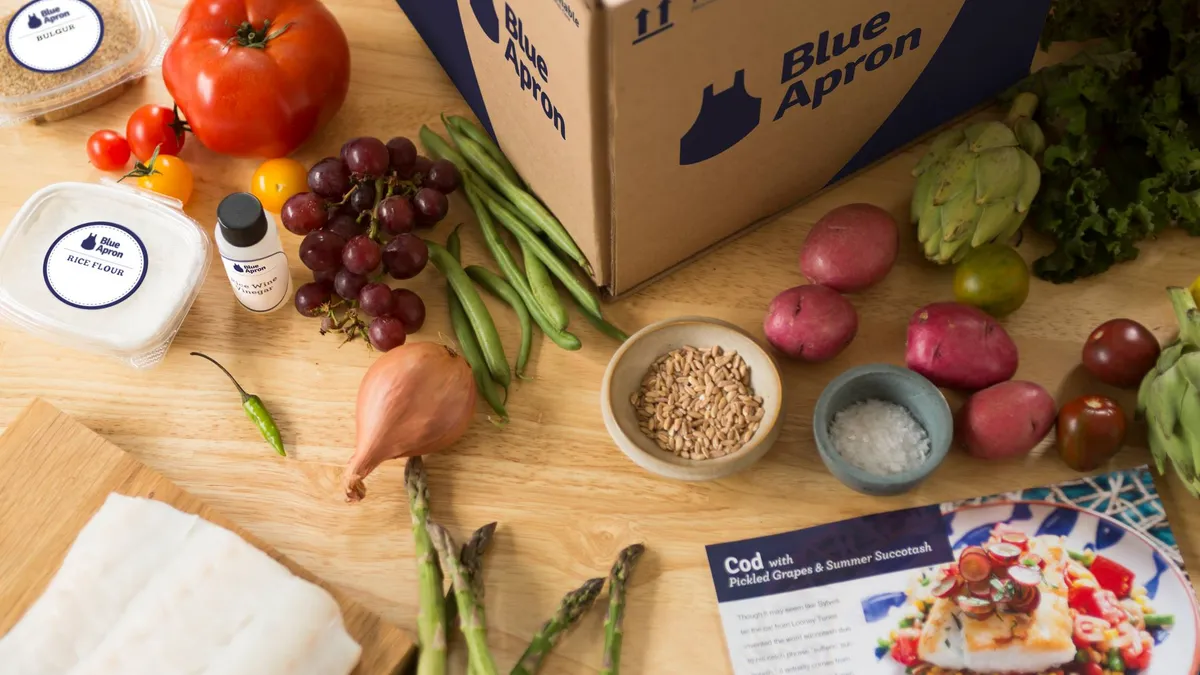Editor’s note: The following is a guest post from Daphne Carmeli,CEO of Deliv, a five-year-old startup same-day delivery service based in Menlo Park, CA.
Americans have always loved restaurants. Whether it’s dine-in or take-out, the U.S. restaurant industry alone cooked up nearly $800 billion in revenue last year, with the average restaurant patron spending upwards of $3,000 a year on meals.
But, it’s not as if Americans are unwilling to cook. Putting a fresh meal on the table is a nightly ritual many of us enjoy, but keeping a diverse stock of fresh ingredients and creative recipes is difficult to do. So it was only a matter of time until a solution was created to offer delicious meals, in a convenient way, and capitalize on adults natural propensity for a home cooked meal.
Enter meal kit delivery.
The packages of pre-portioned ingredients and simple recipes have been the darling of the food industry for the past half decade, with 1 in 4 adults having purchased a meal kit. Although the industry has ballooned to over 150 companies, Blue Apron is considered a leader in this potentially $5 billion market in spite of its less than stellar IPO.
The New York City-based meal kit service has remained on the forefront of fresh meals, offering all the makings for a home-cooked meal delivered direct to customers doorsteps. With similar companies like Plated and HelloFresh, hundreds of thousands of people are conveniently eating fresh meals every night. And now Amazon is testing the waters with meal kit services of its own.
But the convenience of meal delivery comes at a price. The logistics of a meal delivery service — keeping ingredients fresh and delivering them quickly — is a massive time and capital investment, forcing meals to come at a price that is often hard to swallow for consumers.
The hidden price of delivery
In addition to the costs of your fresh vietnamese meatballs or shrimp and shiitake mushrooms, industry analysts estimate that 20-30% of the cost of meal kit delivery services come from transporting those goods.
The boxes are large, the ice packs are heavy, and, most importantly, the food has to be handled carefully to reach consumers in pristine condition. Those costs accumulate quickly, making a meal that would otherwise be $4 dollars from the grocery store a $10 dollar meal from Blue Apron. This has obvious effects on the business of meal delivery, with 40% of former customers identifying cost as their reason for leaving.
In addition to the inflated cost of packaging materials, a frequent concern among Blue Apron customers has been the sheer volume of waste that the service creates. Styrofoam coolers are not out of the norm for storage. Neither are plastic bags, sealed plastic gel packs and other packaging that can be challenging to break down and recycle.
In their recent IPO filings, Blue Apron acknowledged that the cost of ingredients, packaging and delivery was over half a billion dollars. So for a company wanting to take a bite out of the public market, minimizing the costs and environmental impact of delivery is an existential issue.
Getting creative with last mile fulfillment and delivery
With the cost of shipping serving as a deterrent for many meal kit companies, we have had the opportunity to see many innovative and creative approaches to more efficient delivery.
Focusing exclusively on urban markets, many companies use drivers to pick up and drop off fresh ingredients directly from commercial kitchens, cutting the costs of packaging and transportation by delivering meals over short distances. Similarly, grocers have begun experimenting with reusable packaging solutions like FreshRealm to inexpensively deliver items directly from stores.
While both of these approaches are limited in their ability to serve customers outside their immediate vicinity, they are addressing the most important and costly aspect of food delivery: the last mile.
Making the last mile green
Without the knowledge and resources to optimize their own delivery, meal kit services have defaulted to postage services like FedEx Ground. Using these non-specialized services forces companies to prepare items with expensive packaging to travel further distances and longer time spans.
To minimize those costs, many companies have adopted last mile delivery solutions like Deliv to allow them to make more efficient deliveries. The reduced packaging allows customers to receive their ready-to-cook dinners while they’re fresh and with far less waste. Rather than having ingredients sitting in insulation for days, adopting rapid delivery reduces that time to just a few hours.
Along with having to account for long distances, meal kit companies can never be quite sure when their box will be delivered. Outsourcing delivery to an expert allows customers and companies to schedule their meals to be dropped off at optimal times — no more having to package items that may just get left outside.
By minimizing packaging and shipping costs with delivery, meal kit services can focus on creating meals that are convenient, tasty and affordable — keeping their customers’ wallets just as full as their stomachs.


















